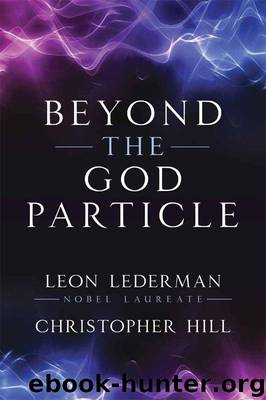Beyond the God Particle by Lederman Leon M. & Hill Christopher T

Author:Lederman, Leon M. & Hill, Christopher T. [Lederman, Leon M.]
Language: eng
Format: mobi, epub
Publisher: Prometheus Books
Published: 2013-10-08T00:00:00+00:00
FIGURE 8.31. Bar Magnet. The magnetic field of a bar magnet.
The poles of a magnet are called north (N) and south (S). If a small iron bar magnet is hung from its middle by a string, it becomes a compass needle, and its N end will point northward, thus its S end points southward. The N end of a magnet will repel the N end of another magnet, S will repel S, but N and S attract each other. Hence, N and S are like positive and negative charges (we call N and S magnetic monopoles). However, we can never have an isolated N without, somewhere, having a compensating S; all magnets are therefore “dipoles,” i.e., having two opposite poles, with equal but opposite N and S. This is a consequence of the magnetic field being set up by electrical currents, rather than having magnetic charges, or “magnetic monopoles,” as their sources.15 Either pole of a magnet will induce magnetization in a nearby magnetic material. Therefore, either pole can attract iron-containing objects, such as paper clips, because the magnet will induce magnetization in the paper clip. The paper clip becomes itself a temporary magnet, with its N pole facing an S pole, or vice versa.
If we arrange a flat white sheet of paper over a bar and sprinkle over the paper little iron filings, the filings will align with the magnetic field and allow us to visualize the magnetic field itself!16
CYCLOTRONS
We'll only mention cyclotrons in passing, since they are rather passé in modern particle physics, and will instead refer the interested reader to the extant literature, e.g., search online for “cyclotrons” or see the Wikipedia entry.17 The idea of a cyclotron is to accelerate charged particles but to hold them in circular spiral motion with a constant magnetic field. For example, we can inject particles into the center of a circular machine with a perpendicular magnetic field. We give the particles a little kick in energy, and they will move in a circle. Each time the particles complete one full turn, they are given another “kick” of energy from the same electric field, and then the cycle repeats. As the particle receives each kick in energy, it will tend to spiral outward into a circular orbit with a larger radius.
The cyclotron was invented in 1932 by Ernest Lawrence of the University of California, Berkeley, with much of the development in collaboration with his student, M. Stanley Livingston. The cyclotron was an improvement over the linac of the 1920s, when it was invented, being more compact and cost-effective due to the circular repetitive acceleration process.
For several decades, cyclotrons were the best source of high-energy beams for nuclear physics experiments; several cyclotrons are still in use for this type of research. Cyclotrons are still actively used in medical applications to treat cancer and to produce radioactive isotopes for medical imaging. Ion beams from cyclotrons can be used, as in proton therapy, to penetrate the body and kill tumors by radiation damage, while minimizing damage to healthy tissue along their path.
Download
Beyond the God Particle by Lederman Leon M. & Hill Christopher T.epub
This site does not store any files on its server. We only index and link to content provided by other sites. Please contact the content providers to delete copyright contents if any and email us, we'll remove relevant links or contents immediately.
The Complete Stick Figure Physics Tutorials by Allen Sarah(7307)
Secrets of Antigravity Propulsion: Tesla, UFOs, and Classified Aerospace Technology by Ph.D. Paul A. Laviolette(5309)
Thing Explainer by Randall Munroe(3877)
The River of Consciousness by Oliver Sacks(3536)
The Order of Time by Carlo Rovelli(3145)
How To by Randall Munroe(3032)
A Brief History of Time by Stephen Hawking(2960)
I Live in the Future & Here's How It Works by Nick Bilton(2935)
The Great Unknown by Marcus du Sautoy(2646)
What If?: Serious Scientific Answers to Absurd Hypothetical Questions by Randall Munroe(2637)
Midnight in Chernobyl by Adam Higginbotham(2483)
Blockchain: Ultimate Step By Step Guide To Understanding Blockchain Technology, Bitcoin Creation, and the future of Money (Novice to Expert) by Keizer Söze(2445)
Networks: An Introduction by Newman Mark(2360)
The Meaning of it All by Richard Feynman(2299)
Easy Electronics by Charles Platt(2281)
The Tao of Physics by Fritjof Capra(2229)
Midnight in Chernobyl: The Untold Story of the World's Greatest Nuclear Disaster by Adam Higginbotham(2177)
When by Daniel H Pink(2082)
Introducing Relativity by Bruce Bassett(2076)
